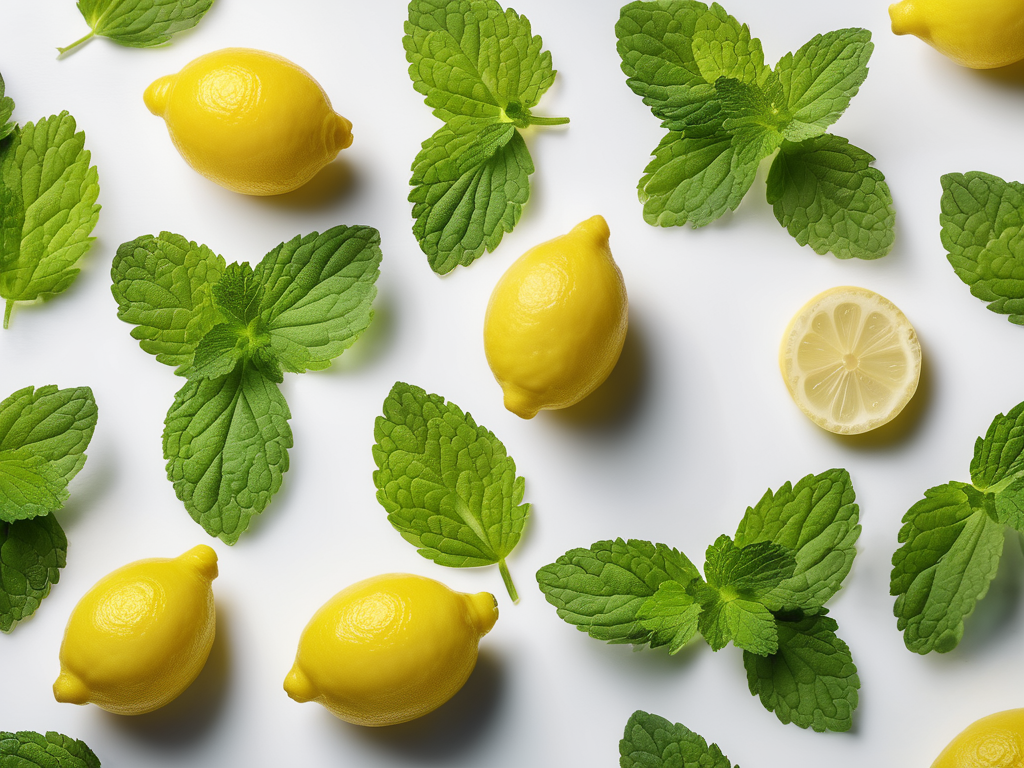
Creative Recipes for Using Up Leftover Lemon Balm
Get Your Free Food Safety Cheat Sheet
30 most common foods with instant answers. Print it and stick it on your fridge—completely free!
Creative Recipes for Using Up Leftover Lemon Balm
Lemon balm is a versatile herb that adds a refreshing citrusy flavor to dishes. If you have some leftover lemon balm and are looking for creative ways to use it up, you've come to the right place! In this blog post, we will explore some delicious recipes that make the most of this fragrant herb. From beverages to desserts, there are plenty of ways to incorporate lemon balm into your cooking. (Lemon balm)
Why Use Lemon Balm?
Lemon balm, also known as Melissa officinalis, is a member of the mint family and is prized for its lemony aroma and flavor. It is not only delicious but also offers several health benefits, including calming properties and digestive support. Using up leftover lemon balm ensures that you get the most out of this wonderful herb without letting it go to waste.
Tips for Using Fresh Lemon Balm
Before we dive into the recipes, here are some tips for using fresh lemon balm in your cooking:
- Wash the lemon balm leaves thoroughly before using them to remove any dirt or debris.
- Pat the leaves dry with a paper towel to remove excess moisture.
- Store fresh lemon balm in the refrigerator wrapped in a damp paper towel or in a plastic bag for longer shelf life.
Lemon Balm Recipes
1. Lemon Balm Infused Water
Ingredients:
- Fresh lemon balm leaves
- Water
- Ice
Instructions:
- Fill a pitcher with water and add a handful of fresh lemon balm leaves.
- Refrigerate for a few hours to allow the flavors to infuse.
- Serve over ice for a refreshing and hydrating drink.
2. Lemon Balm Pesto
Ingredients:
- Fresh lemon balm leaves
- Pine nuts
- Parmesan cheese
- Garlic
- Olive oil
- Salt and pepper
Instructions:
- In a food processor, combine lemon balm leaves, pine nuts, Parmesan cheese, and garlic.
- Pulse until finely chopped.
- With the processor running, slowly drizzle in olive oil until the mixture forms a smooth paste.
- Season with salt and pepper to taste.
- Toss with pasta or use as a spread on sandwiches.
3. Lemon Balm Sorbet
Ingredients:
- Fresh lemon balm leaves
- Sugar
- Water
- Lemon juice
Instructions:
- Make a simple syrup by heating sugar and water in a saucepan until the sugar dissolves.
- Remove from heat and add fresh lemon balm leaves.
- Let the mixture cool, then strain out the leaves.
- Stir in lemon juice and freeze in an ice cream maker according to the manufacturer's instructions.
4. Lemon Balm Roasted Chicken
Ingredients:
- Whole chicken
- Fresh lemon balm leaves
- Garlic
- Lemon
- Olive oil
- Salt and pepper
Instructions:
- Preheat the oven and prepare the chicken for roasting.
- Stuff the cavity with fresh lemon balm leaves, garlic, and lemon slices.
- Rub the outside of the chicken with olive oil, salt, and pepper.
- Roast until the chicken is cooked through and golden brown.
Food Safety Tips
When using fresh herbs like lemon balm in your cooking, it's important to keep food safety in mind. Here are some tips to ensure that your dishes are safe to eat:
- Wash all fresh produce, including herbs, before using them in your recipes.
- Store leftover dishes containing lemon balm in airtight containers in the refrigerator to prevent spoilage.
- Avoid cross-contamination by using separate cutting boards and utensils for raw meat and fresh herbs.
Conclusion
Incorporating leftover lemon balm into your cooking is a great way to add flavor and freshness to your dishes. Whether you choose to make a refreshing beverage or a savory chicken dish, there are plenty of creative recipes to try. Remember to follow food safety guidelines when using fresh herbs and enjoy the delicious flavors of lemon balm in your cooking. [Learn more about lemon balm here](/food/lemon balm). (Lemon balm)
Authoritative Food Safety References
These agencies and university labs inform every tip and health precaution we publish.
USDA FoodKeeper – Cold Storage Guidelines
Official refrigerator, freezer, and pantry timelines maintained by the U.S. Department of Agriculture.
Visit USDA FoodKeeperFDA Produce Safety Rule & Grower Guidance
Field-to-fridge handling practices that prevent contamination of fruits, vegetables, and leafy greens.
Visit FDA Produce SafetyCDC Foodborne Illness Prevention Hub
Surveillance-backed guidance on pathogens, symptoms, and steps to reduce foodborne illness risk.
Visit CDC Food SafetyUC Davis Postharvest Technology Center
University research detailing optimal storage atmospheres for produce after harvest.
Visit UC Davis PostharvestPenn State Extension – Home Food Preservation & Safety
Peer-reviewed extension bulletins on safe canning, chilling, and reheating practices.
Visit Penn State ExtensionGet Your Free Food Safety Cheat Sheet
30 most common foods with instant answers. Print it and stick it on your fridge—completely free! Want more? Upgrade to the complete guide with 70+ foods.
Scan your food directly and get instant safety info using our AI-powered camera feature.